 |
 |
 |
| |
GUT MICROBIOTA, PLASMA METABOLOMICS, AND ATHEROSCLEROSIS IN HIV INFECTION
|
| |
| |
CROI 2022 Feb 11-16
Zheng Wang1, Wendy Post2, Alan Landay3, Kathleen Weber4, Elizabeth T. Golub5, Deborah Gustafson6, Seble Kassaye7, Bradley Aouizerat8, Sabina Haberlen9, Carlos Malvestutto10, Matthew Budoff11, Kathryn Anastos1, Robert Kaplan1, Robert Burk1, Qibin Qi1
1Albert Einstein College of Medicine, Bronx, NY, USA, 2Johns Hopkins University, Baltimore, MD, USA, 3Rush University Medical Center, Chicago, IL, USA, 44 Hektoen Institute of Medicine, Chicago, IL, USA, 5Johns Hopkins Bloomberg School of Public Health, Baltimore, MD, USA, 6State University of New York-Downstate Medical Center, Brooklyn, NY, USA, 7Georgetown University, Washington, DC, USA, 8New York University, New York, NY, USA, 9Johns Hopkins Bloomberg School of Public Health, Baltimore,MD, USA, 10Ohio State University, Columbus, OH, USA, 11University of California Los Angeles, Los Angeles, CA, USA
Background:
Alterations in gut microbiota and blood metabolomic profiles have been implicated in HIV infection and cardiovascular disease respectively. However, it remains unclear whether alterations in gut microbiota and related functional components may contribute to disrupted host blood metabolomic profiles in relation to atherosclerosis, especially in the context of HIV infection.
Methods:
We analyzed cross-sectional associations between gut microbiota features(e.g., diversity and taxonomy) and carotid artery plaque in 361 women with or at high risk of HIV(67% HIV+) from the Women's Interagency HIV Study(WIHS). We further examined cross-sectional associations of gut bacterial genera and functional enzymes with plasma lipidomic and metabolomic profiles. In 737 women and men from the WIHS and the Multicenter AIDS Cohort Study, we examined prospective associations of baseline gut bacteria-associated lipidomic and metabolomic profiles with incident carotid artery plaque over a median 7-year follow-up.
Results:
Two potentially pathogenic bacteria, Fusobacterium and Proteus, were positively associated with carotid artery plaque, while two bacteria which can produce beneficial metabolites(e.g., butyrate), Odoribacter and Adlercreutzia, were inversely associated with carotid artery plaque (Fig 1A). Gut Fusobacterium and Proteus, but not Odoribacter or Adlercreutzia, were associated with multiple plasma lipids and metabolites, and these lipids and metabolites were clustered into 8 modules by the network analysis (Fig 1B,C). A module comprised of 9 lysophosphatidylcholines(LPCs) and lysophosphatidylethanolamines(LPEs) and a module comprised of 9 diglycerides(DGs) were longitudinally associated with increased risk of carotid artery plaque(RR[95% CI] = 1.34[1.09, 1.64] and 1.24[1.02, 1.51] per SD increment in the module scores, respectively). Functional analyses identified several bacterial enzymes in the lipid metabolism associated with the above plasma lipids as well as gut Fusobacterium and Proteus (Fig 1D). In particular, phospholipase A1 and A2 are the key enzymes in the reactions producing LPCs and LPEs from phosphatidylcholines and phosphatidylethanolamines.
Conclusion:
Among individuals with or at high risk of HIV infection, we identified altered gut microbiota and related functional capacities in the lipid metabolism associated with disrupted plasma lipidomic profiles and carotid artery atherosclerosis.
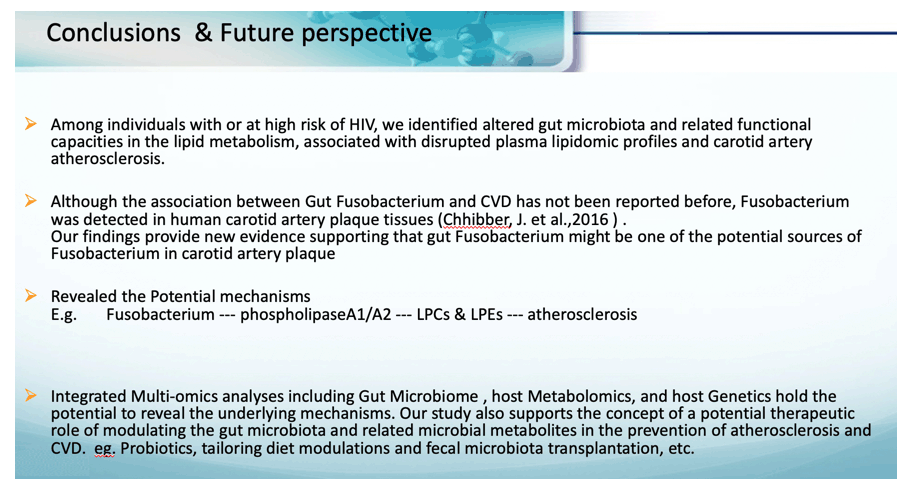
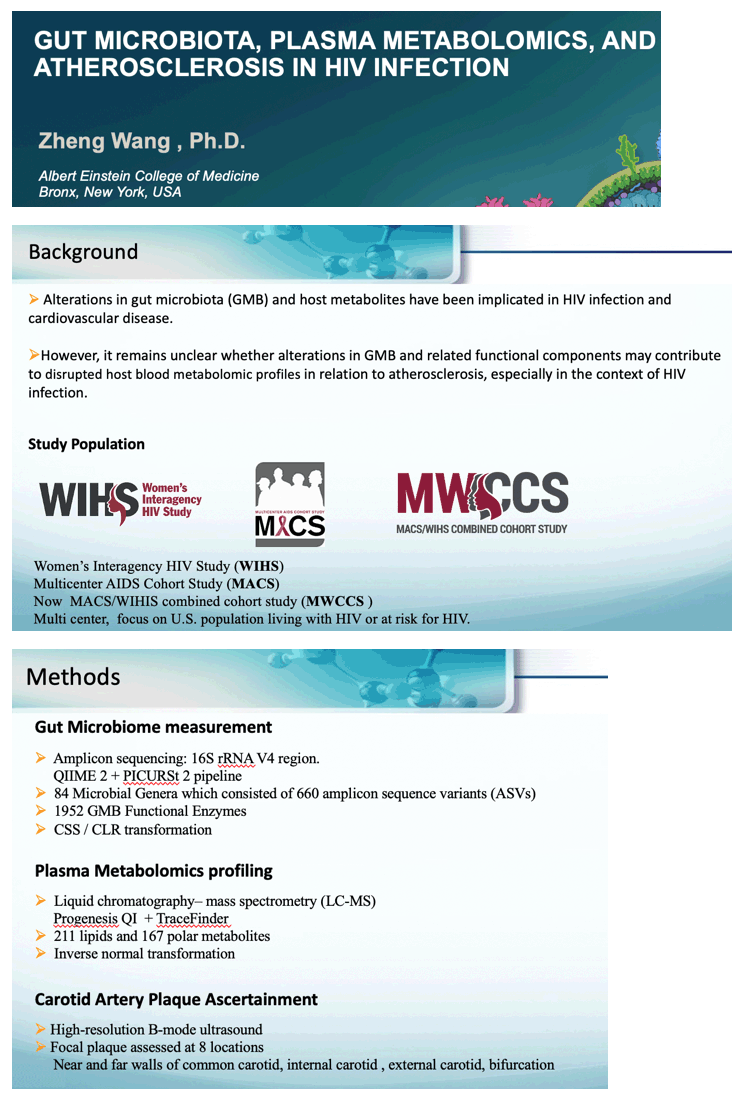
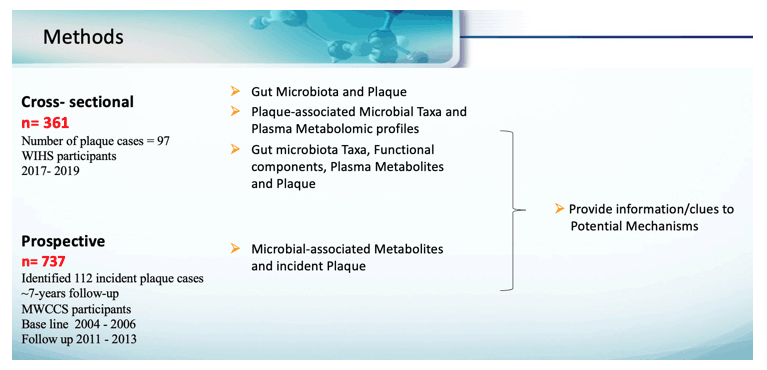
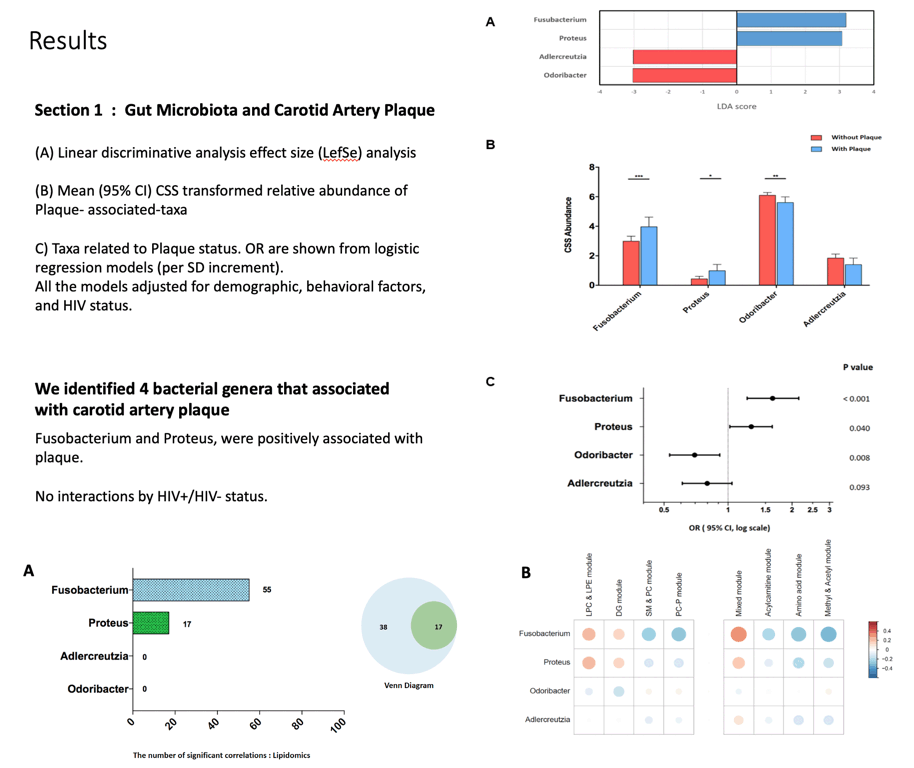
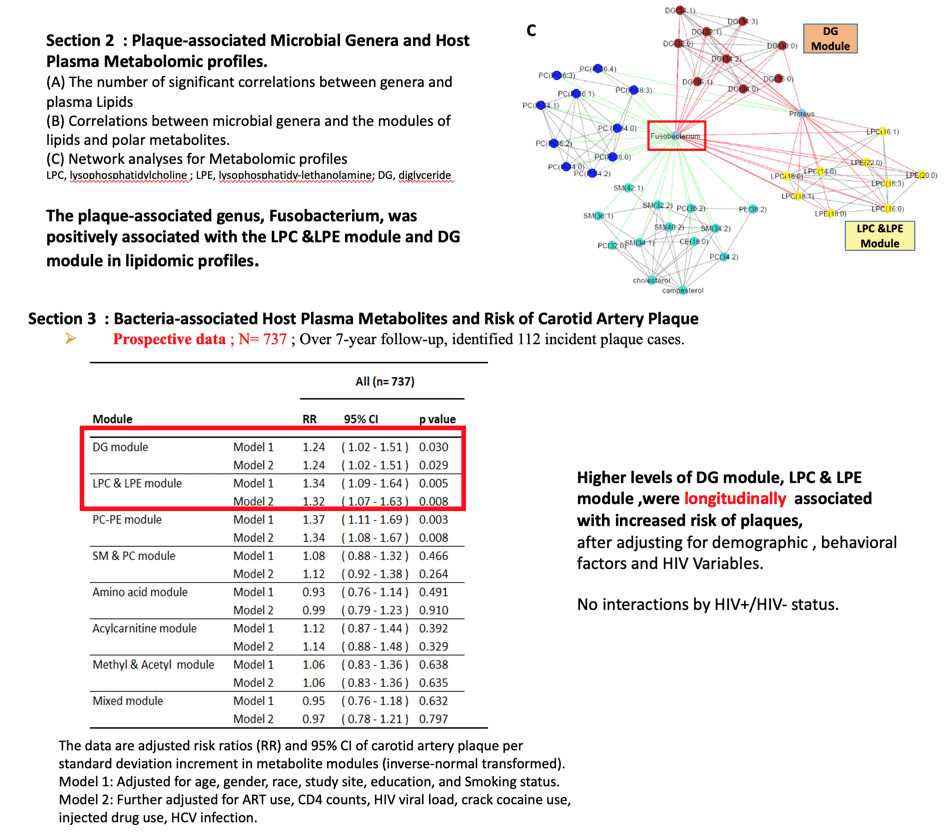
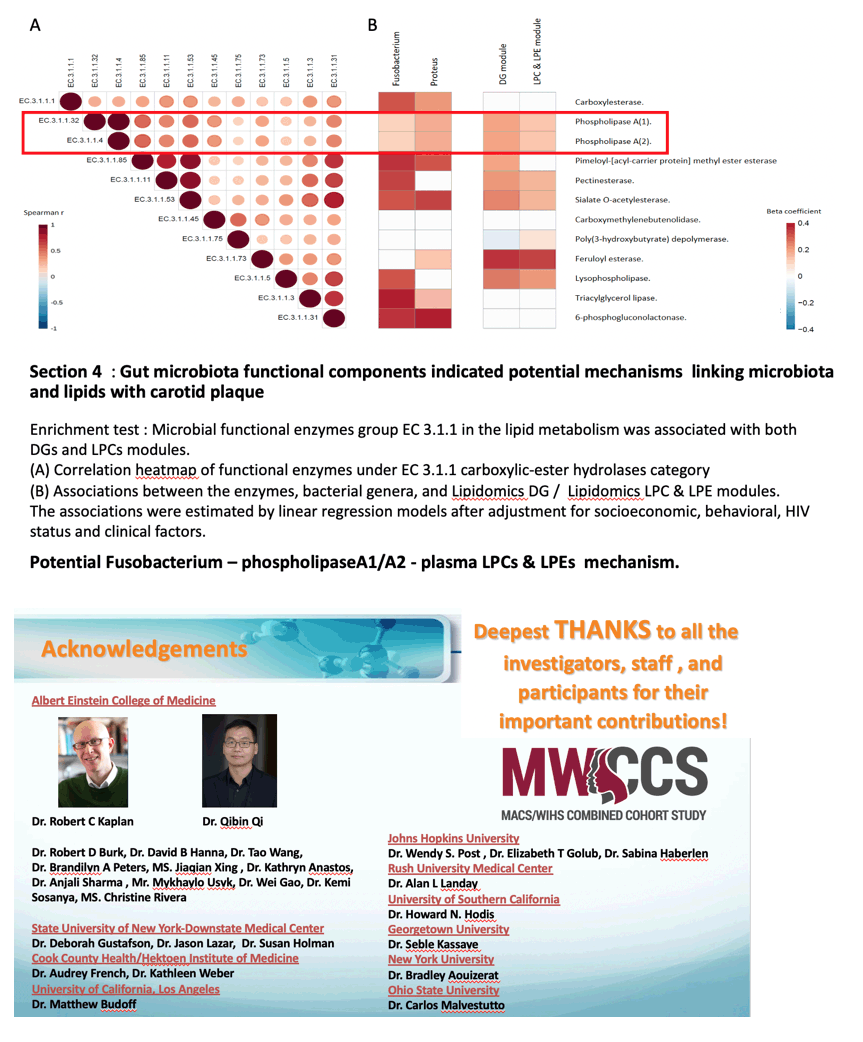
|
| |
|
 |
 |
|
|